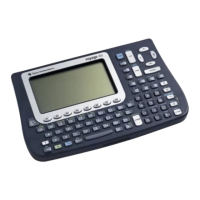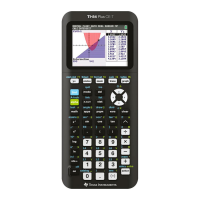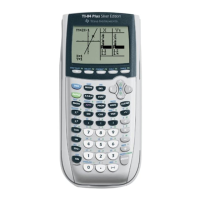Chapter 2: TI-83 Plus Specific Information 81
TI-83 Plus Developer Guide Third Release May 28, 2002
Contrast Control
Adjusting the contrast setting of the display from an application can be done in two
ways.
• Executing the system GetKey routine will allow normal adjusting of the contrast by
the user, using the y } and † keyboard keys.
• The display driver controls the contrast level of the display. Applications can send a
new contrast setting to the display driver.
Below is an example of how to send a contrast setting command to the display
driver.
;
; accumulator = valid contrast value 18h to 3Fh
;
; let us set the contrast to its darkest
LD A,3Fh
OR 0C0h ; or in LCD contrast command
CALL lcd_busy_2 ; delay for LCD driver
OUT (lcdinstport),A ; set contrast
RET
Note: Adjusting the contrast in this manner will not affect the systems contrast RAM value. The new
contrast setting will only be in effect temporarily. In order to make the new setting permanent
the systems contrast value must be updated. The system’s contrast value ranges from 0 to
27h, and is stored in RAM location (contrast). Display driver setting minus 18h = (contrast).
Split Screen Modes
The TI-83 Plus has three mode settings that define the size of the display, Full screen,
Horizontal split and Graph-Table (vertical split). All of the system display writing and
graph utility routines adjust for the current split mode setting.
Applications need to be aware of the current split screen setting and take steps to
ensure that the current setting will not alter the intended output to the display.
Applications that do not intend to take advantage of a split screen have two ways to
avoid problems.
• Temporarily change the screen setting to full screen and then reset it. This option is
chosen if an application wants to retain the current split screen setting after
completion.
The current split screen settings are saved in some application defined RAM
locations (six bytes in length). Then the setting is changed to full screen mode. The
application must restore the original split screen settings back to the input state upon
completion. The following routines will save the current split screen setting and
restore it.
